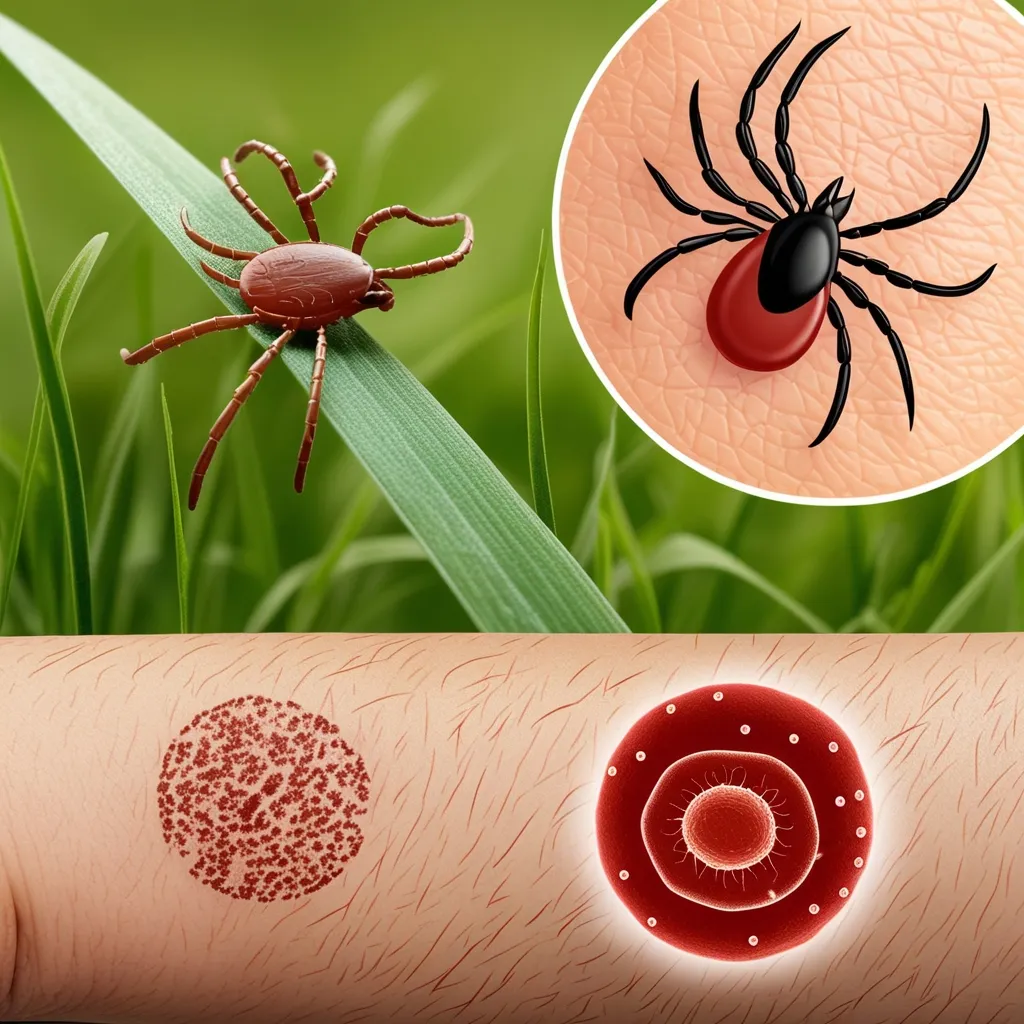Lyme disease is a nasty bacterial infection that can mess up a person’s day—or their life—if not caught and treated on time. It’s passed to humans through the bites of tiny blacklegged ticks, also known as deer ticks. These pesky little critters are just about as small as a grain of sand and love hanging out in grassy, brushy, and wooded areas. Understanding how Lyme disease works is absolutely crucial for getting ahead of it and treating it effectively.
When one of these infected ticks bites, it transmits the bacteria Borrelia burgdorferi. The telltale signs of Lyme can pop up as soon as 3 days after the bite or as late as 30 days later. One of the most famous symptoms is something called erythema migrans (EM)—a rash that often looks like a bull’s-eye. Though sometimes it’s just a plain red spot that grows over time, getting a few inches wide. It’s usually warm, but not itchy or particularly painful, so keep an eye out for hot spots on your skin if you’ve been outdoors. Along with this rash, early symptoms include fever, chills, headache, fatigue, muscle and joint pain, and swollen lymph nodes.
If Lyme disease isn’t treated early, it progresses through three gnarly stages: early localized, early disseminated, and late disseminated. In the early localized stage, you’ll see the initial symptoms like the EM rash and that generally-feeling-awful vibe. It’s a great time to hit it with antibiotics and most people just bounce back. But if it moves to the early disseminated stage, which happens weeks after the bite, you’ll get more rashes, intense headaches, neck stiffness, facial muscle weakness (also known as facial palsy), and joint pain. If left untreated, it can reach the late disseminated stage months or even years down the line, causing arthritis, severe joint pain, and even nerve damage or brain inflammation.
Diagnosing Lyme disease takes a bit of detective work. Docs will look at your symptoms, consider your recent tick-exposure bingo card, and run some blood tests. The most common ones look for antibodies that your body cranks out in response to the bacteria. Since these antibodies can take their sweet time to appear, a negative test early on doesn’t always mean you’re in the clear. Often, a two-step testing process is used, starting with an enzyme-linked immunosorbent assay (ELISA) followed by a confirmatory test like an immunoblot if the ELISA test isn’t definitive.
The good news is, Lyme disease is usually pretty treatable with a straightforward antibiotic regimen. You’ll get a 10- to 14-day dose of doxycycline, amoxicillin, or cefuroxime if you catch it early. In more serious cases where it affects your brain or heart, you might need IV antibiotics. Most people recover fully if they start treatment early enough. But if you let it go untreated, it can dive deeper into your joints, heart, and nervous system, causing all sorts of trouble.
Some folks, however, aren’t out of the woods even after finishing their antibiotics. This condition is Post-Treatment Lyme Disease Syndrome (PTLDS), where you might still feel tired, achey, or mentally foggy. It’s a bit of a mystery still, but extended antibiotic courses don’t seem to help and can sometimes make things worse.
Prevention is the key when it comes to Lyme disease. Avoid tick-heavy areas like the plague—those wooded, grassy places they love. Use insect repellents that have DEET, picaridin, IR3535, or oil of lemon eucalyptus on both skin and clothes. Permethrin-treated clothing and gear adds another layer of defense. Clothes should be light-colored so you can spot ticks easily. Think long sleeves, long pants, and tucking everything in nice and snug. After outdoor outings, check yourself, your kids, and your pets for ticks. Quick and correct removal is critical.
If you find a tick snagged on you, get a pair of fine-tipped tweezers and grab it as close to your skin as you can. Pull upwards with steady, even pressure. Avoid twisting or jerking to prevent the mouthparts from breaking off and staying embedded. Once off, clean the area with soap, water, and an antiseptic.
For those still struggling with long-term symptoms, effective management is about working closely with healthcare providers to pin down the most annoying symptoms and crafting strategies to handle them. Some approaches tailored for conditions like chronic fatigue syndrome can also be quite handy here.
All in all, Lyme disease is a serious issue but pretty manageable if detected and treated early. Avoid tick bites and recognize early symptoms to dodge those harsher complications. If there’s even a slight chance you’ve had an encounter with a tick and you’re feeling off, see your healthcare provider ASAP.






